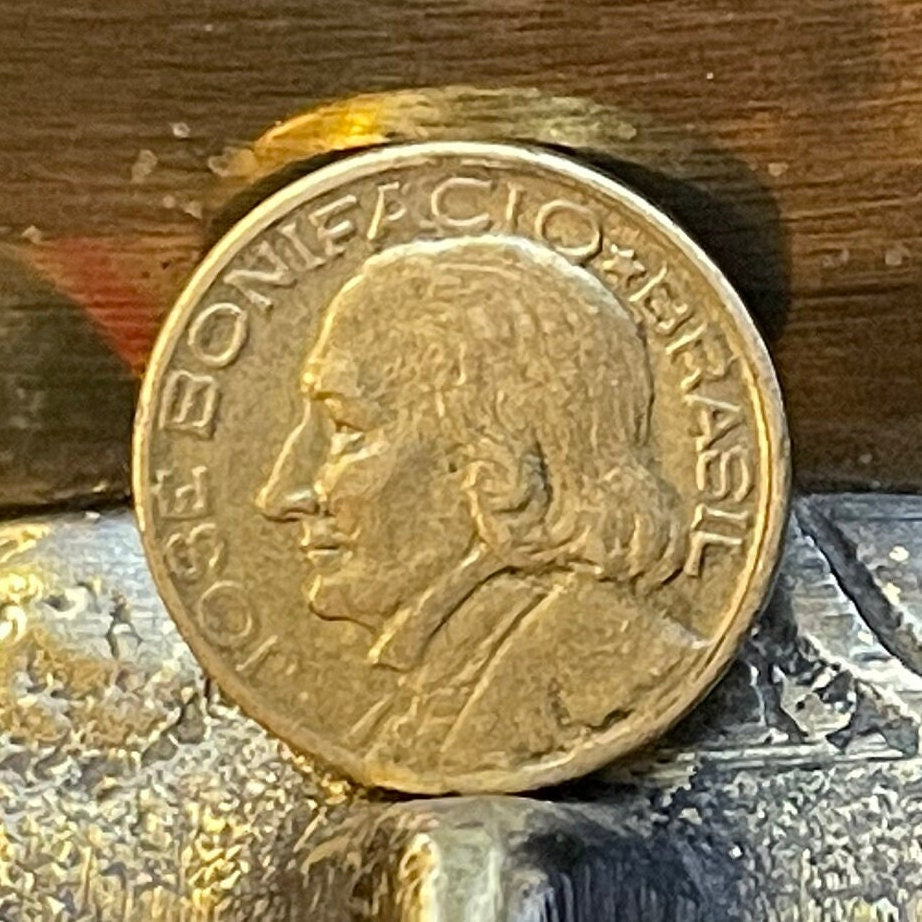elemintalshop
Geologist of Lithium José Bonifácio de Andrada, Patriarch of the Independence of Brazil 10 Centavos Authentic Coin Money for Jewelry
Geologist of Lithium José Bonifácio de Andrada, Patriarch of the Independence of Brazil 10 Centavos Authentic Coin Money for Jewelry
Couldn't load pickup availability
Geologist of Lithium José Bonifácio de Andrada e Silva, Patriarch of the Independence of Brazil 10 Centavos Brazil Authentic Coin Money for Jewelry and Craft Making
Obverse: Portrait of José Bonifácio de Andrada e Silva (1763-1838). Among his discoveries was petalite, a lithium-containing material. He also was the first to discover another important lithium-containing mineral, spodumene.
Lettering: JOSÉ BONIFÁCIO * BRASIL
Translation: JOSE BONIFACIO * BRAZIL
Reverse: The denomination above the line, with a star above and the date below
Lettering: 10 CENTAVOS
Features
Issuer Brazil
Period Republic of the United States of Brazil (1889-1967)
Type Standard circulation coin
Years 1947-1955
Value 10 Centavos (0.1 BRZ)
Currency Cruzeiro (1942-1967)
Composition Aluminium-bronze (90% Copper, 8% Aluminium, 2% Zinc)
Weight 2.96 g
Diameter 17.04 mm
Thickness 1.86 mm
Shape Round
Technique Milled
Orientation Coin alignment ↑↓
Demonetized Yes
Number N# 6792
References KM# 561, Schön# 66
Wikipedia:
José Bonifácio de Andrada e Silva, (13 June 1763 – 6 April 1838); was a Brazilian statesman, naturalist, mineralist, professor and poet, born in Santos, São Paulo, then part of the Portuguese Empire. He was one of the most important mentors of Brazilian independence, and his actions were decisive for the success of Emperor Pedro I. He supported public education, was an abolitionist and suggested that a new national capital be created in Brazil's underdeveloped interior (effected over a century later as Brasília). His career as naturalist was marked by the discovery of four new minerals.
Career in Europe
José Bonifácio spent part of his life in Europe. In his travels around Europe he studied chemistry and mineralogy with other scientists. He collected data, carried out scientific experiments and discovered four new minerals and eight previously unknown species. The mineral andradite is named for him. Among his other discoveries was petalite, a lithium-containing material, first discovered by Andrade toward the end of the 18th century on a trip to Sweden; it was in this mineral that Swedish chemists first discovered lithium. He also was the first to discover another important lithium-containing mineral, spodumene, from the same source, the island of Utö in the Stockholm Archipelago of Sweden.
Share










As described, arrived safely and promptly.









